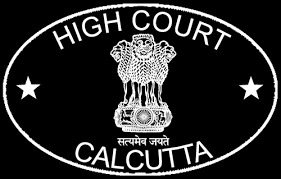M.M. Kumar, J.@mdashThis petition filed u/s 15(6) of the Haryana Urban (Control of Rent and Eviction) Act, 1973 (for brevity, ''the Act'') is directed against the judgment passed by both the Courts below directing ejectment of the tenant- petitioners from the demised premises. Both the courts below have concurrently found that the tenant-petitioners are in arrears of rent and that they have also purchased their own house. Therefore, they are liable to be ejected on those counts under Sections 13(2)(i) and 13(3)(a)(iv) of the Act respectively. The findings of the Appellate Authority are available in paragraph 13 of the judgment with regard to arrears of rent and the same reads as under:
"No doubt, the respondent has stated that the rent has already been paid upto October, 1996 but no receipt was given by Phiraya Lal, father of Kundan Lal. The onus to prove payment of rent was heavy upon the tenant who has alleged also evident that the said Kuldeep Kaur sold the property vide Ex.P.3 on 5.4.1995. Therefore, from Ex.P.2 and P.3 the learned Rent Controller has rightly observed that Kuldip Kaur had acquired the property which was sufficient for her accommodation and as such in view of provisions of Section 3(a)(iv) of the Act the learned Rent Controller has rightly ordered the eviction of the respondent-tenant from the rented premises."
2. Both the Courts below have also concluded that there is relationship of tenant and. landlord between Kundan Lal landlord-respondent and the tenant-petitioners. Overwhelming evidence has been discussed in paragraph 11 by the Appellate Authority showing that Kundan Lal has been the owner and landlord of the demised premises. The findings of the Rent Controller in that regard has also been upheld. The findings of the Appellate Authority based on the analysis of evidence read as under:
"..,. After going through Ex.P.15 and Ex.P.17 and in view of the admission by the witnesses of respondent now appellant, it has to be held that Kundan Lal petitioner is undoubtedly landlord/owner of the tenanted premises and as such it has to be held that respondent-appellant has failed to prove that Kundan Lal was not their landlord. Therefore, it has to be held that petitioner Kundan Lal is the owner- cum-landlord of the tenanted premises and the respondent appellants arc tenants under him and as such the learned Rent Controller has rightly come to the conclusion that there was relationship of landlord and tenant between the parties and thus the findings on issue No. 6 are hereby affirmed."
3. Mr. Ashok Gupta, learned counsel for the tenant-petitioners has argued that the findings with regard to relationship of the landlord and tenant suffer from inherent inconsistency because the entries of the house tax assessment register of the year 1983-84 Ex.R.l and Rule 2 relied upon by the tenant-petitioners categorically show that it was Phiraya Lal, the father of the petitioner who was owner of the property and the rent assessed is Rs. 175/-. According to the learned counsel for the purposes of assessing the rate of rent of Rs. 175/-, Ex.R.l and Rule 2 have been relied upon whereas for the other purpose as to whether Kundan Lal landlord-respondent is the owner of the property, Ex.R.l and Rule 2 have been discarded. Learned counsel has also argued that in his statement before the Trial Court, landlord- respondent Kundan Lal has stated that the title documents were submitted to the Municipal Committee and the same have not been returned by the Municipal Committee. According to the learned counsel, the non-production of the title documents is fatal to the case of the landlord-respondent because in the absence of title documents, no document could be taken into consideration for the purposes of concluding that Kundan Lal, landlord-respondent is in fact the owner.
4. Having heard the learned counsel at some length, I am of the considered view that the findings recorded by both the Courts below are based on overwhelming evidence as is discernible from para 11 (supra) of the judgment of the Appellate Authority. It has been concurrently found that landlord-respondent Kundan Lal has been the owner of the tenanted premises. He has produced his father Phiraya Lal as PW1 and his vendor Kartar Singh as PW8. He has tendered in evidence correspondence between Phiraya Lal who has taken a self harming stand that he was not the owner of the tenanted premises. On the contrary he supported the claim of the son Kundan Lal, landlord-respondent. When a person makes a statement against his own interest generally such a statement has to be accepted as correct because it is treated as admission within the meanings of Sections 17 and 18 of the Indian Evidence Act, 1872. Moreover, the documents Exs. R.l and Rule 2 on which reliance has been placed by the learned counsel for the tenant-petitioner are entries of the house tax assessment registered pertaining to the year 1983-84 whereas the landlord respondent has produced on record the subsequent entries controverting Ex. Rule 1 and Rule 2. The tenant petitioners have failed to discharge the onus of proving the absence of any relationship with the landlord-respondent. Both the Courts below after detailed appreciation of evidence have recorded the conclusion that landlord-respondent Kundan Lal is owner of the demised premises. It is well settled that concurrent findings of facts by reappreciating evidence cannot be interfered with u/s 15(6) of the Act. In this regard reference may be made to the judgments of the Supreme Court in the cases of Vaneet Jain v. Jagjit Singh (2000) 126 P.L.R. 263 (S.C.);
5. I am further of the view that the Courts below have concurrently found that the tenant-petitioners are in arrears of rent and accordingly they are liable to be evicted under'' Section 13(2)(i) of the Act. Still further it has been found by both the Courts below that the tenant-petitioners have purchased their own house and on that count also they are liable to be ejected as per the provisions of Section 13(3)(a)(iv) of the Act. The argument of the learned counsel that entries of house tax assessment register Exs. Rule 1 and Rule 2 are required to be either accepted or rejected in whole cannot be accepted because entry with regard to the ownership have been fully explained and the Courts below have relied upon the afore-mentioned documents for the purposes of assessing the rate of rent. The afore-mentioned course has to be adopted because there is no rent note on record or receipt of rent to assist the Court to determine the rate of rent. Therefore, there is no illegality committed by the Courts below warranting interference of this Court in the exercise of jurisdiction u/s 15(6) of the Act. Similarly, I am not impressed with the argument that the title deed was required to be proved in order to show the proprietary rights of the landlord-respondent. If the question of ownership by the landlord-respondent has been proved by circumstantial evidence the production of title deed is not a sine qua non for furnishing its proof. Moreover, the onus to prove the absence of relationship of tenant and landlord was on the tenant-petitioner. In any case, the father of the landlord-respondent Phiraya Lal has expired and by operation of law his son Kundan Lal, landlord-respondent has to inherit the tenanted premises. Therefore, I do not find any substance in the aforementioned argument raised by the learned counsel warranting admission of the petition.
No other argument has been raised.
For the reasons aforementioned, this petition fails and the same is dismissed.

